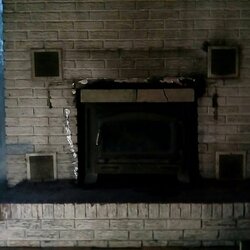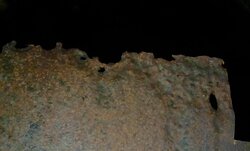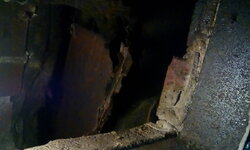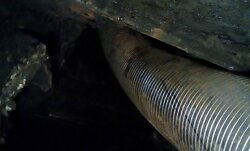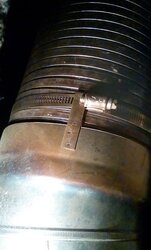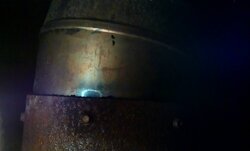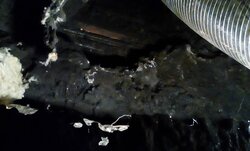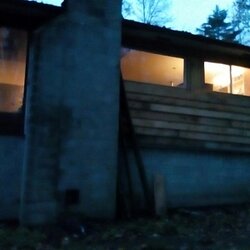i bought a 70s kit home in 2000 and recently had the chimney relined. the guy told me my fireplace was a Heatilator. i had no idea. i've had an old woodstove in there forever, now venting via a new chimney liner, but today with winter coming i decided to check out whether the Heatilator with its fancy vents is doing anything at all.
the main back metal wall is rusted but in place, however its roof is rotted away completely. a second metal shield behind the first was so rusted i just vacuumed the entire thing out today via the lower ducts. the upper ducts are bad too. it appears unsalvageable.
i've seen vids of people tearing these out and they've torn apart their entire fireplace. i've also found many articles saying how dangerous it is to put any woodstove into a Heatilator, and given the condition of mine i do not know if the radiant heat from my woodstove is safely contained.
argh!
anyway i wonder if anyone here has either used an insert with a Heatilator or converted one back to a regular masonry fireplace? i suppose i could just put a woodstove elsewhere in the room but this is a large white fireplace that will look ridiculous sitting unused. i keep hearing this scenario:
buyer: " oh look a cool retro fireplace!"
me: "er..um.."
sorry my first post was so long, i found a monster in my wall! any advice greatly appreciated.
the main back metal wall is rusted but in place, however its roof is rotted away completely. a second metal shield behind the first was so rusted i just vacuumed the entire thing out today via the lower ducts. the upper ducts are bad too. it appears unsalvageable.
i've seen vids of people tearing these out and they've torn apart their entire fireplace. i've also found many articles saying how dangerous it is to put any woodstove into a Heatilator, and given the condition of mine i do not know if the radiant heat from my woodstove is safely contained.
argh!
anyway i wonder if anyone here has either used an insert with a Heatilator or converted one back to a regular masonry fireplace? i suppose i could just put a woodstove elsewhere in the room but this is a large white fireplace that will look ridiculous sitting unused. i keep hearing this scenario:
buyer: " oh look a cool retro fireplace!"
me: "er..um.."
sorry my first post was so long, i found a monster in my wall! any advice greatly appreciated.


